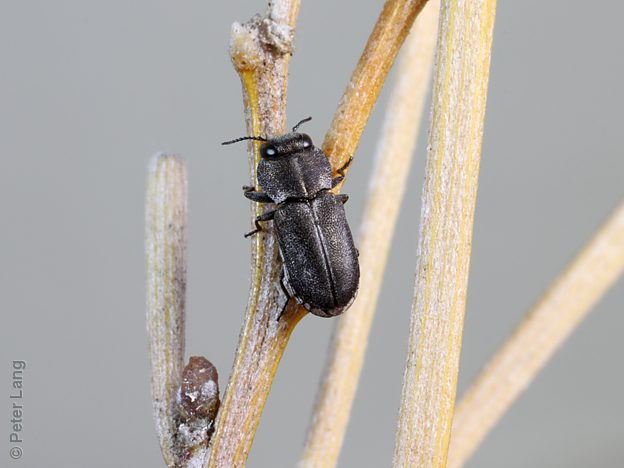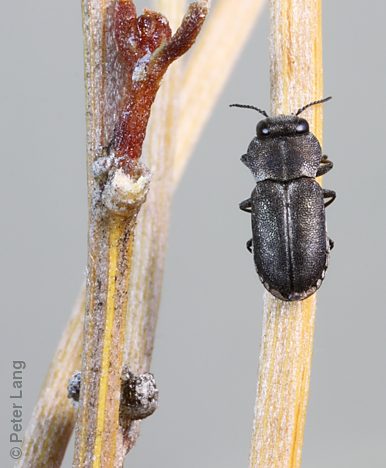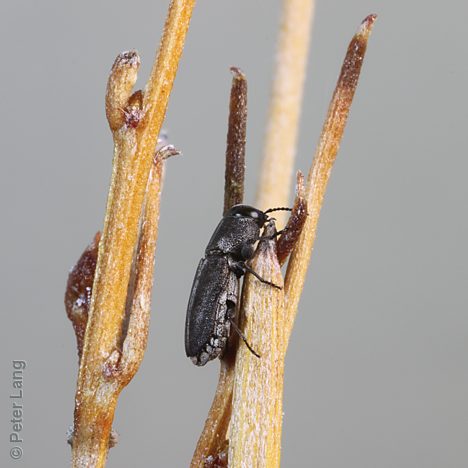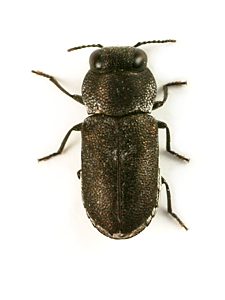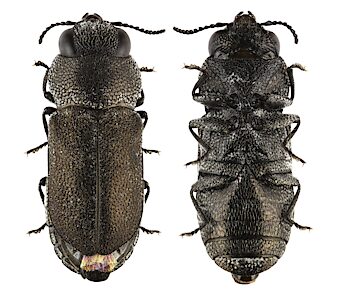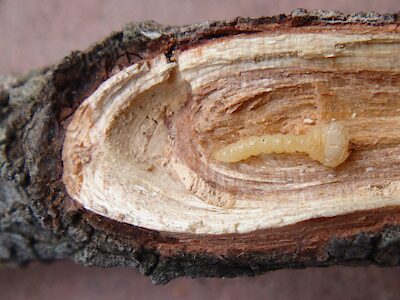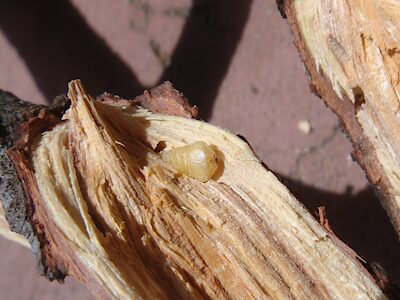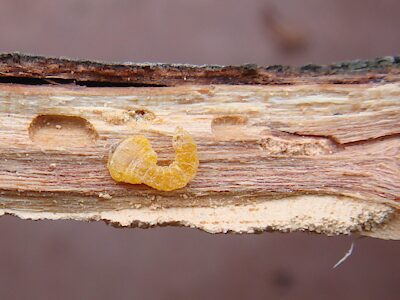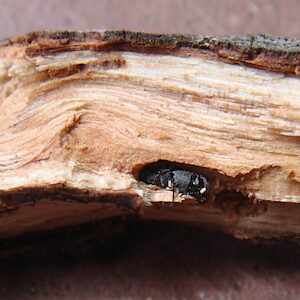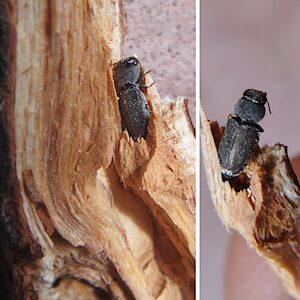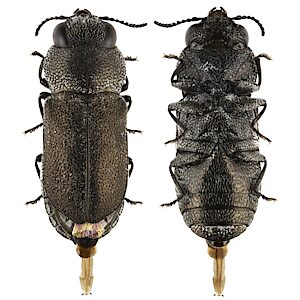Small size; pronotum with an impressed midline and lateral margins strongly contracted towards the posterior; relatively dull colouration with areas of white mealiness.
This name is applied here in a very broad sense and most likely covers a number of different (unnamed) species.
Notographus uniformis was first described (as Anthaxia) by MacLeay 1888 based on type material from the NW of WA. It was described as brassy-brown, whereas most SA specimens attributed to this species are charcoal grey. They display much variation in size, shape and aedeagus structure and the group is very much in need of taxonomic revision.
There are numerous SA Museum specimens attributed to this species that have not yet had their data captured.
| Legend | records | count of breeding adults, pupae and larvae |
| sites | count of major sites (unique 10 km grid cells +/- some distinct approximate localities) |
| adult | live = extracted alive; dead = extracted dead as intact or fragmentary remains; ex billet = reared and emerged from stored sections of host; ex pupa = reared from sampled pupa |
| pupa | extracted pupa; pupa ex larva = reared pupa from larva |
| larva | extracted larva (any stage including prepupa) |
| gall (only) | hatched or unhatched gall identified by form and position rather than contents |
| Plant names in green are hyperlinked to a matching host species page with plant photos. |
Adults have mostly been found on Legumes (family Fabaceae), and specifically on species of Acacia and Senna. There is also evidence of an association with dead foliage of Wattles (Acacia species). In 2017, I extracted a dead adult from the base of a dead stem of Acacia spilleriana and reared another from associated sections of stem retained as billets. These appear to be the first reported larval host records for the species and genus.
Alex Stolarski and I found breeding stages in a second Acacia species, A. notabilis in November 2022. Given its wide distribution and the variety of Acacias on which adults have been found, N. uniformis probably uses a wide range of Acacia species as larval host plants.
| ¹ Legend | regions | SA State Herbarium regions (map)
EA: Eastern, EP: Eyre Peninsula, FR: Flinders Ranges, GT: Gairdner-Torrens, KI: Kangaroo Island, LE: Lake Eyre, MU: Murray, NL: Northern Lofty, NU: Nullarbor, NW: North-Western, SE: South-Eastern, SL: Southern Lofty, YP: Yorke Peninsula |
| size | The ellipse is the correct size when printed, indicative on a desktop screen, and likely to be wrong on a mobile device. |
